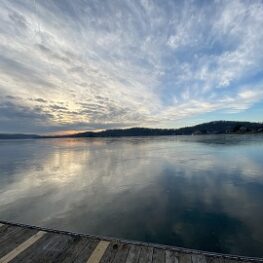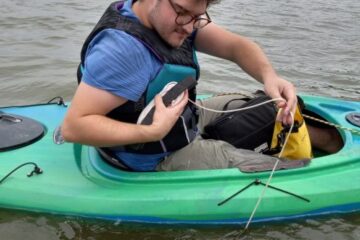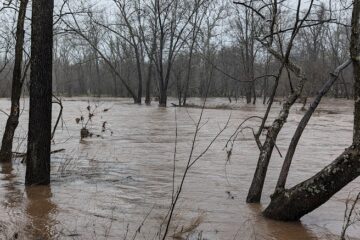 Raritan Headwaters (RHA), in partnership with the Rutgers Cooperative Extension, Water Resources Program (WRP) and Mount Olive Township, completed a proposed Watershed Restoration and Protection Plan for Budd Lake. The Plan, which was funded by a 319h grant from the NJ Department of Environmental Protection (DEP), is a blueprint for improving conditions in Budd Lake by tackling stormwater pollutants entering the lake from the surrounding areas. Stormwater runoff carries nutrients and bacteria from fertilizers, septic systems, and animal waste as well as sediments, road salt, pesticides, petroleum products, and anything else we put on the land. The goal is to capture and filter stormwater upstream of the Lake so that water quality improves over time making it less prone to Harmful Algal Blooms (HABs) and a much cleaner waterbody for fishing, boating, and swimming. Budd Lake, the largest natural lake in New Jersey, is the headwaters of the South Branch Raritan River, and a source of drinking water to about 1.8 million people in the state. The Plan will also inform climate adaptation planning for Mount Olive Township.
Raritan Headwaters (RHA), in partnership with the Rutgers Cooperative Extension, Water Resources Program (WRP) and Mount Olive Township, completed a proposed Watershed Restoration and Protection Plan for Budd Lake. The Plan, which was funded by a 319h grant from the NJ Department of Environmental Protection (DEP), is a blueprint for improving conditions in Budd Lake by tackling stormwater pollutants entering the lake from the surrounding areas. Stormwater runoff carries nutrients and bacteria from fertilizers, septic systems, and animal waste as well as sediments, road salt, pesticides, petroleum products, and anything else we put on the land. The goal is to capture and filter stormwater upstream of the Lake so that water quality improves over time making it less prone to Harmful Algal Blooms (HABs) and a much cleaner waterbody for fishing, boating, and swimming. Budd Lake, the largest natural lake in New Jersey, is the headwaters of the South Branch Raritan River, and a source of drinking water to about 1.8 million people in the state. The Plan will also inform climate adaptation planning for Mount Olive Township.
Budd Lake is a critical waterbody in the Upper Raritan. The quality of water in the Lake greatly impacts local residents and visitors drawn to its natural beauty and recreational opportunities. But the Lake’s water will also be providing drinking water for many people downstream in more urban areas.
The Plan addresses a double-wammy: past urban development that brought more buildings and pavement with no place for precipitation to go except into storm drains that empty into streams and the lake, coupled with climate change that brings bigger storms and more polluted stormwater. Green infrastructure is a key component of the plan – emphasizing the use of rain gardens, bioswales and other natural means to capture and filter stormwater to remedy the loss of natural forests and wetlands in the watershed. In addition, the plan discusses other important options such as preservation of forests and wetlands that are critical for water quality, manufactured treatment devices (MTDs) at most stormwater outfalls to the lake, and the potential for floating islands of native plant vegetation that would capture some of the nutrients, in particular phosphate, from the lake.
A major emphasis of the Plan is community engagement through River Friendly programs and rain garden rebates for residents and businesses. Whatever we put on the land, or flush down the drain potentially ends up in our streams and lakes. That means residents and businesses in the Budd Lake community can each play a part in protecting this precious water supply and recreational resource.
The draft Budd Lake Watershed Restoration and Protection Plan is currently in review by NJDEP. Once approved, the next step will be to implement the Plan. To view the draft plan and accompanying appendices, visit https://www.raritanheadwaters.org/maps-data/ and scroll down to “Projects.”



